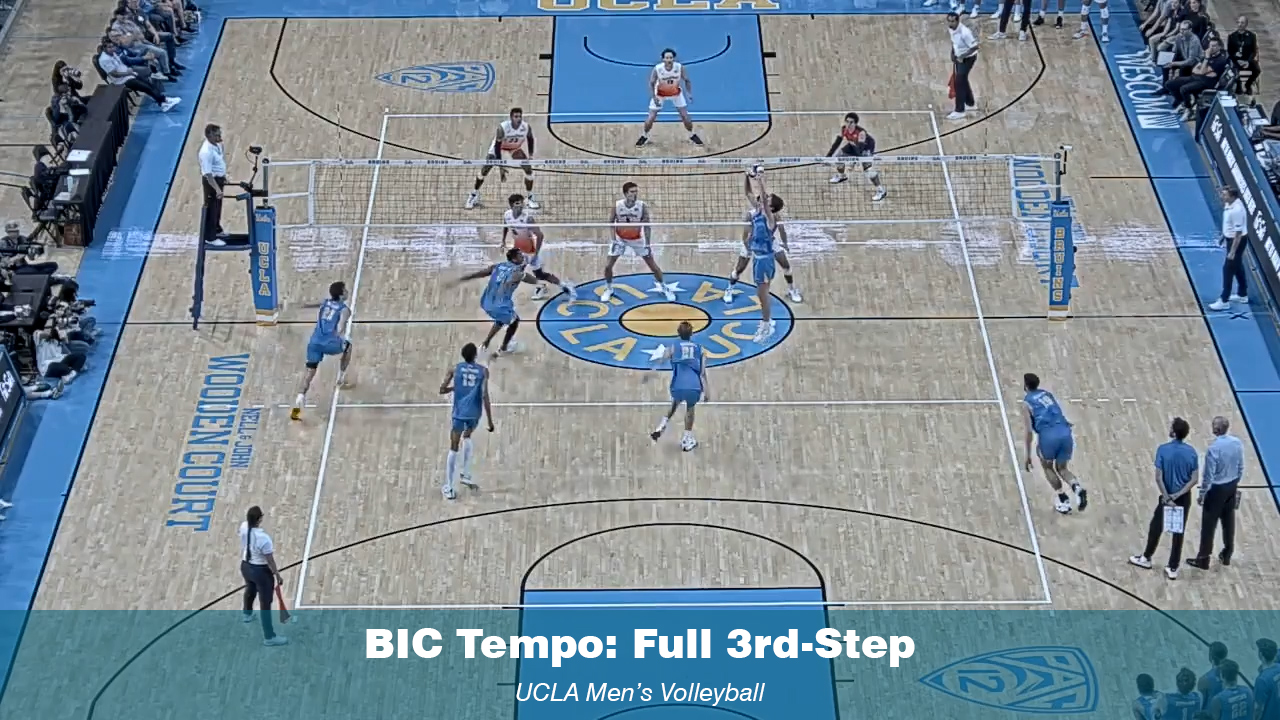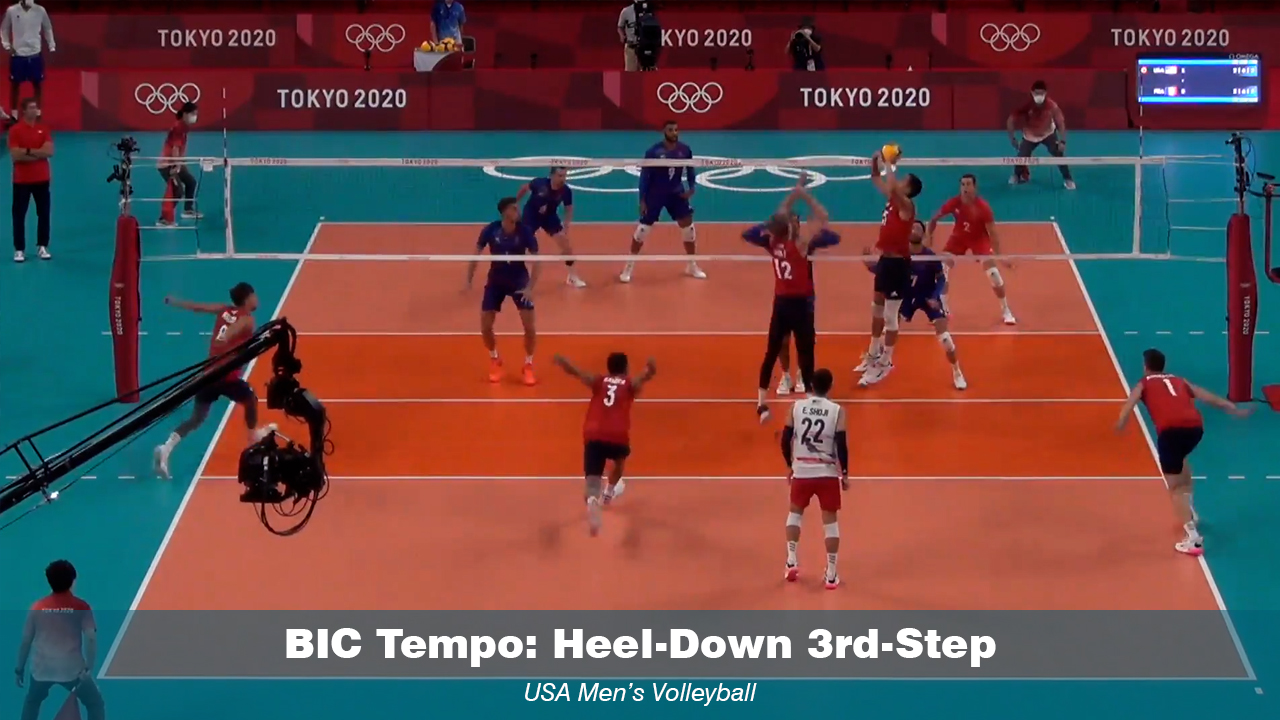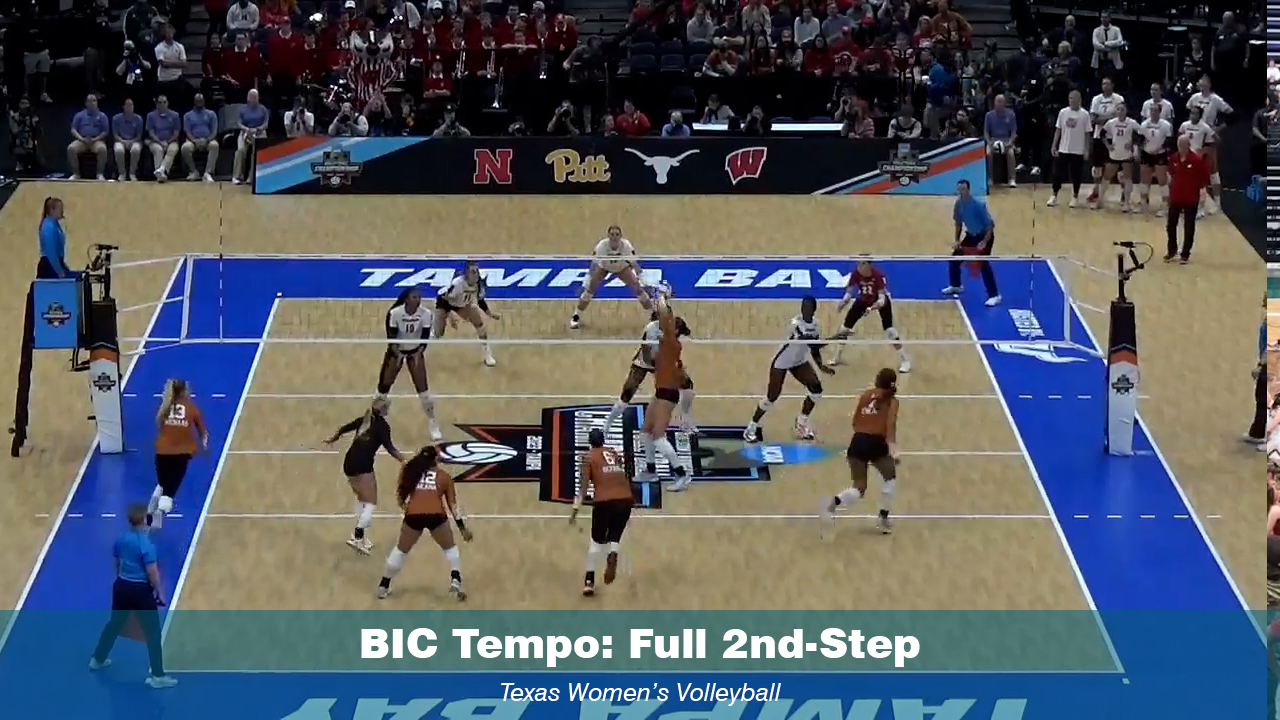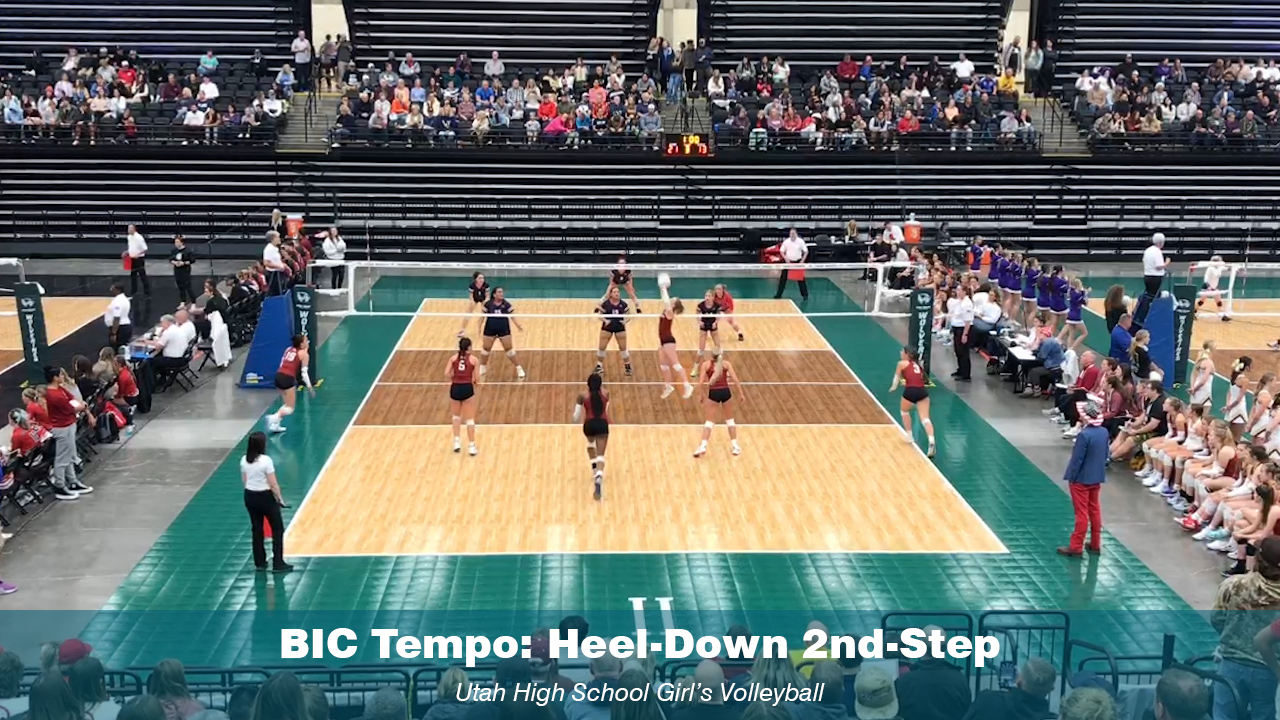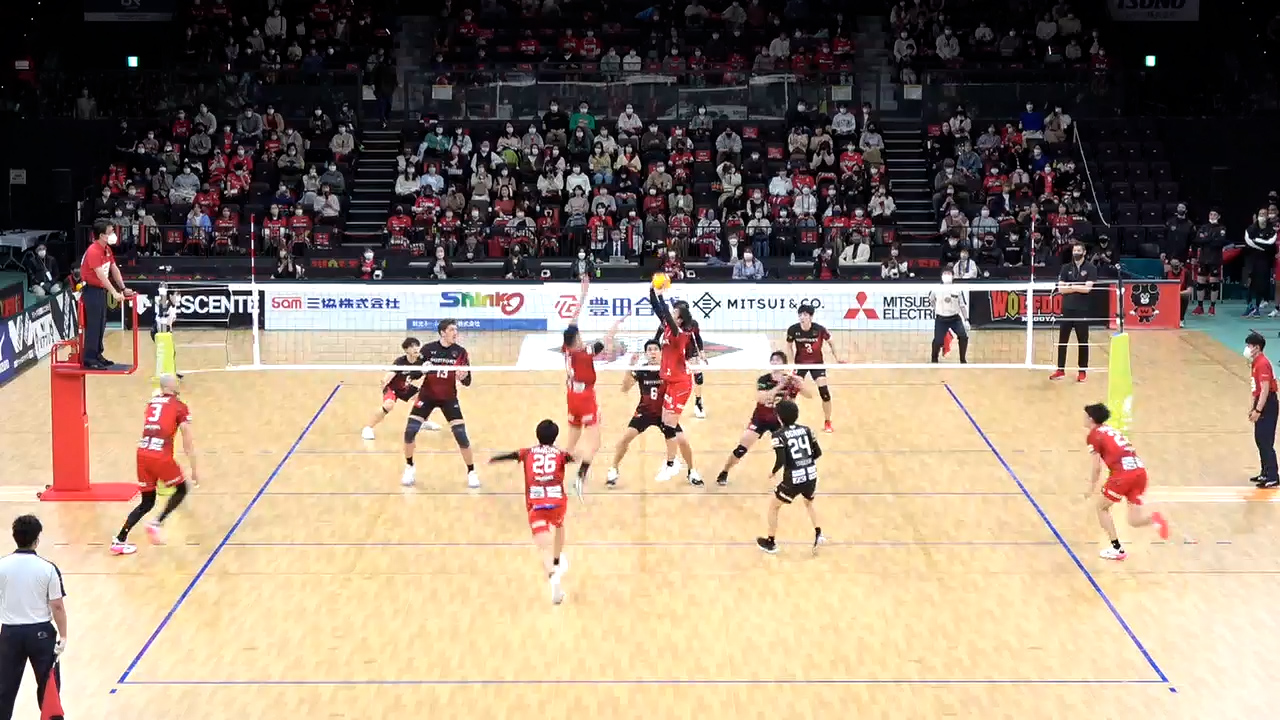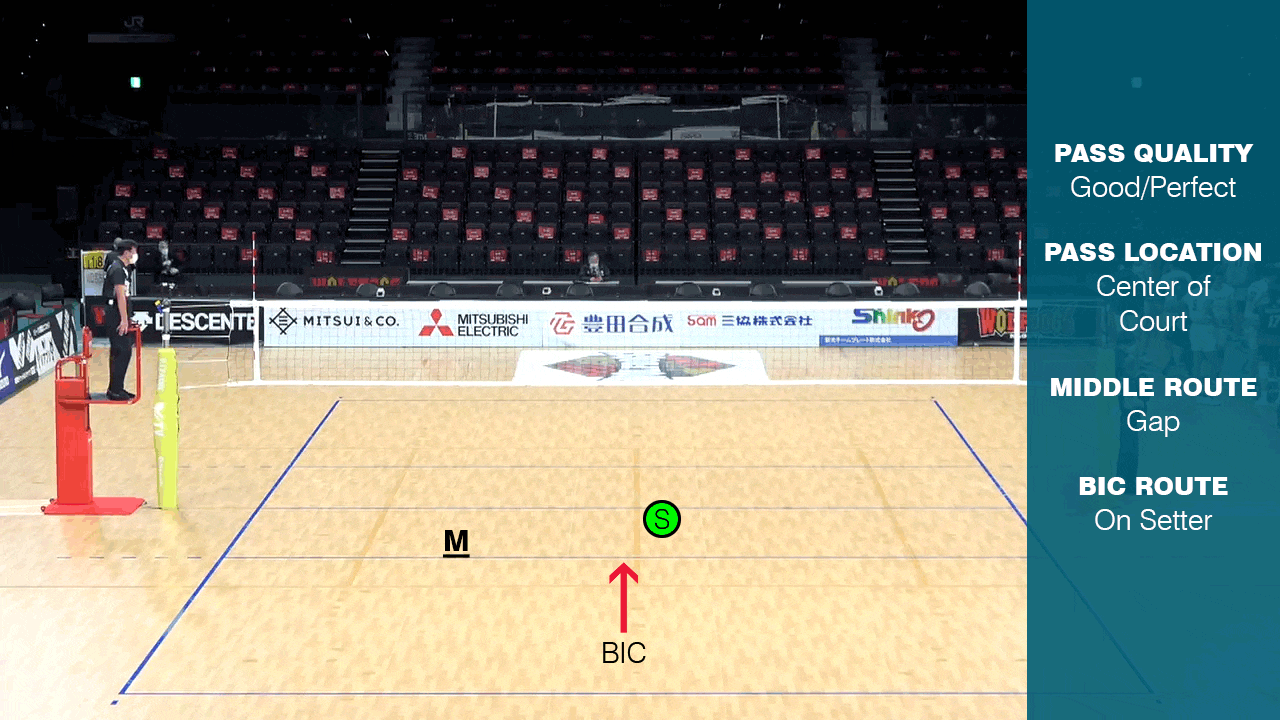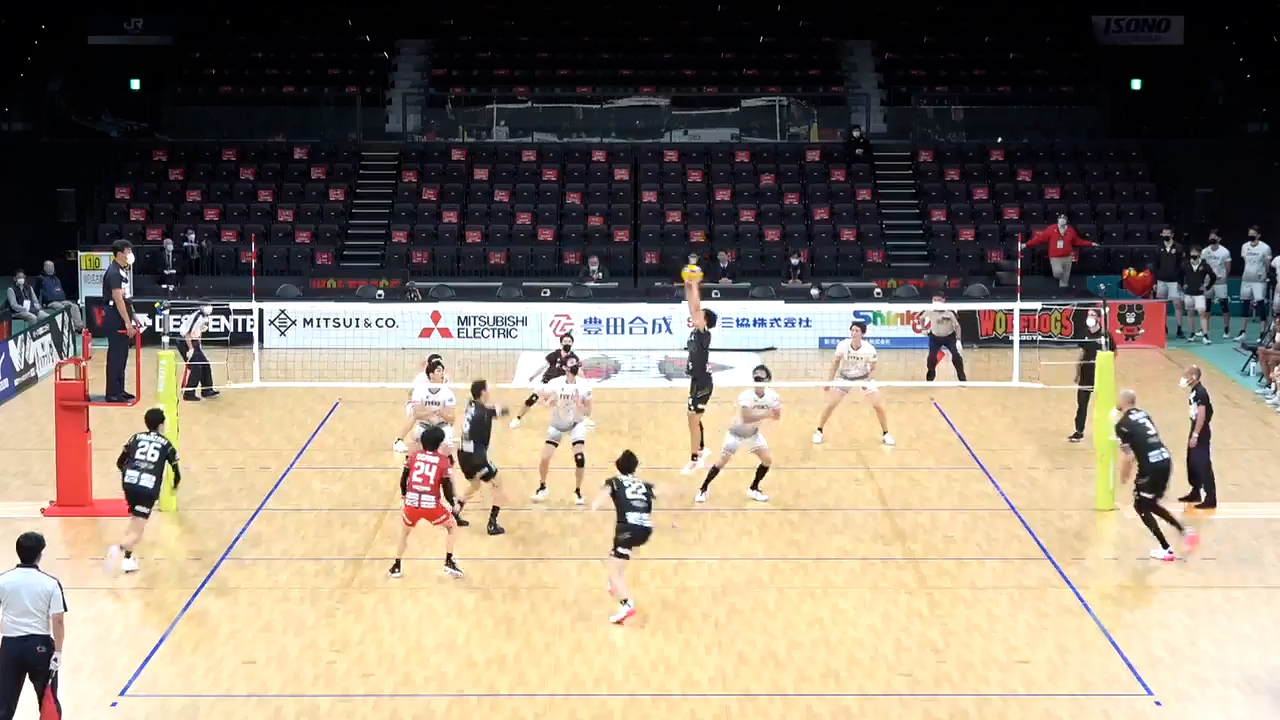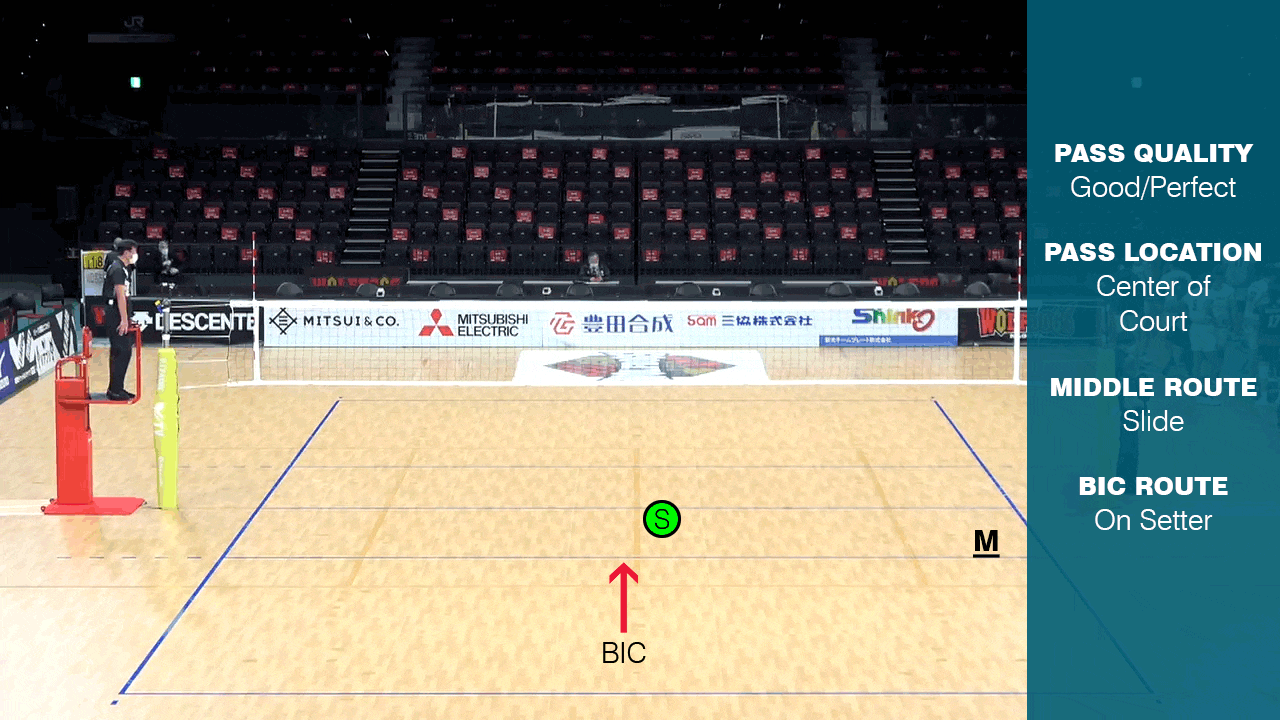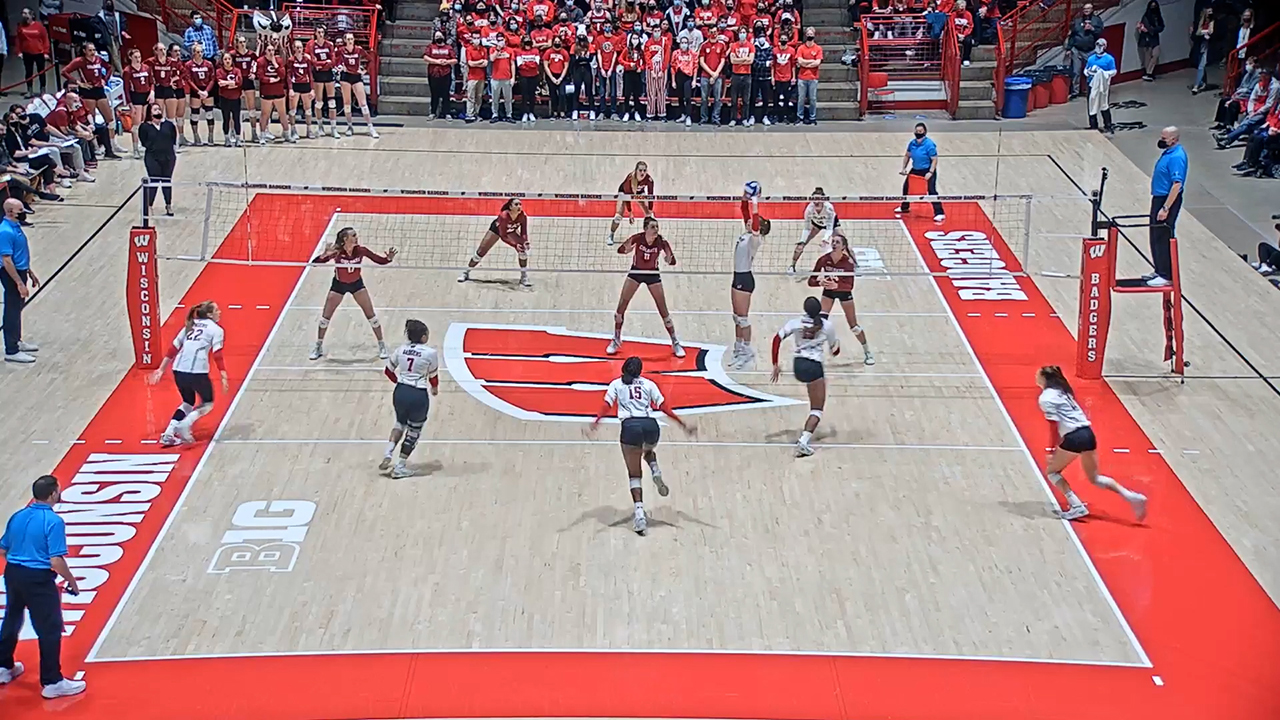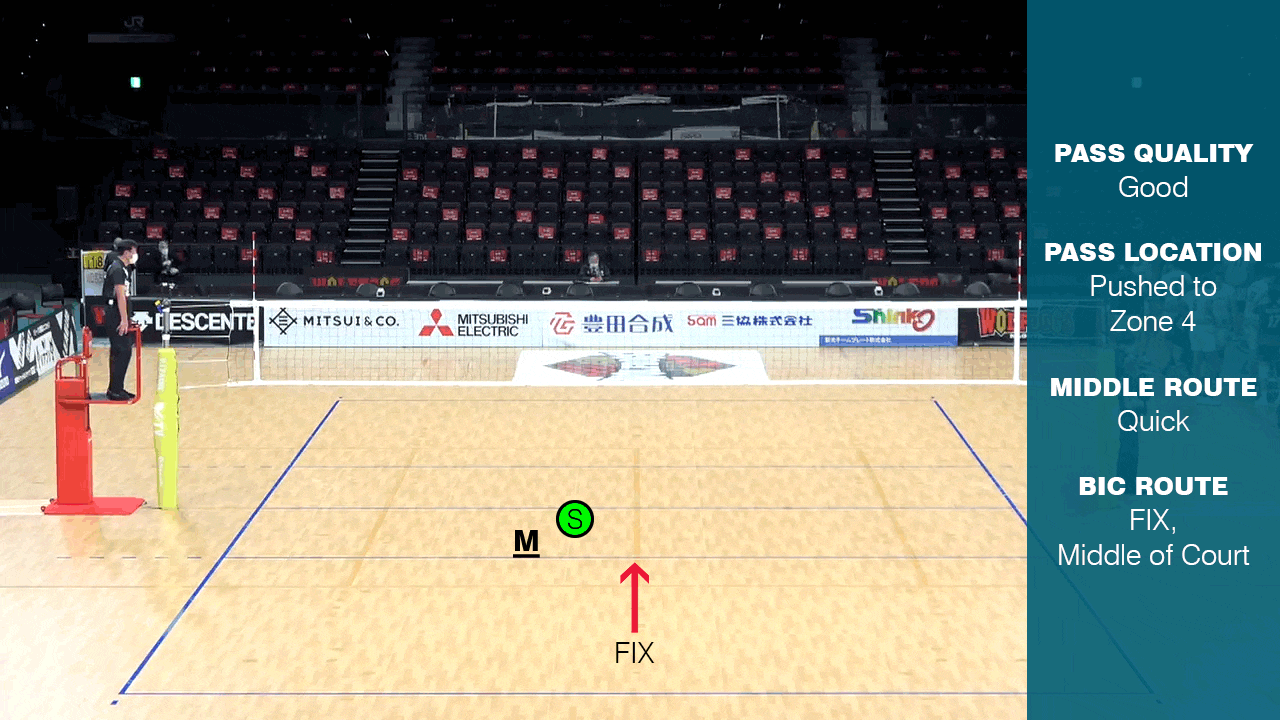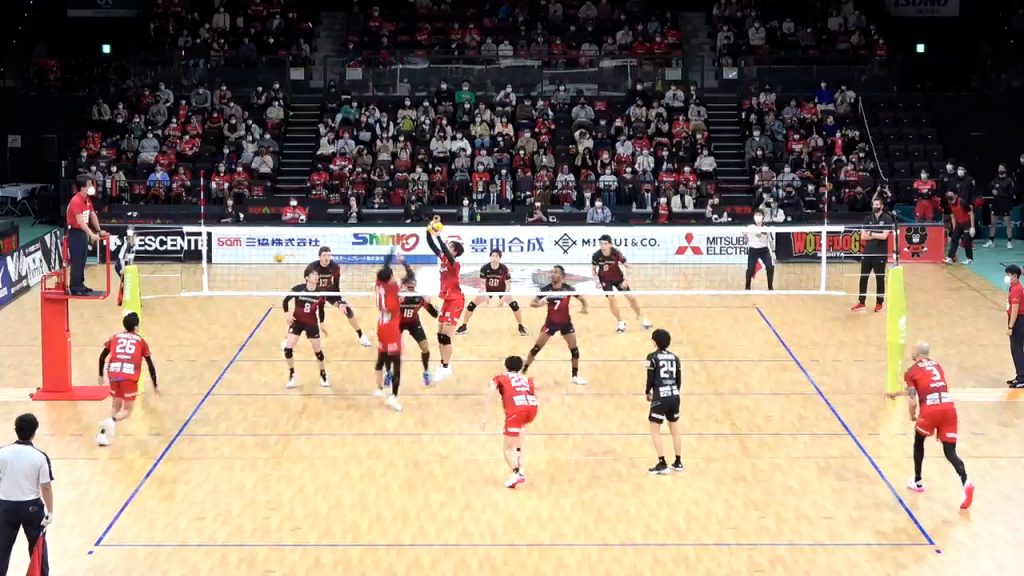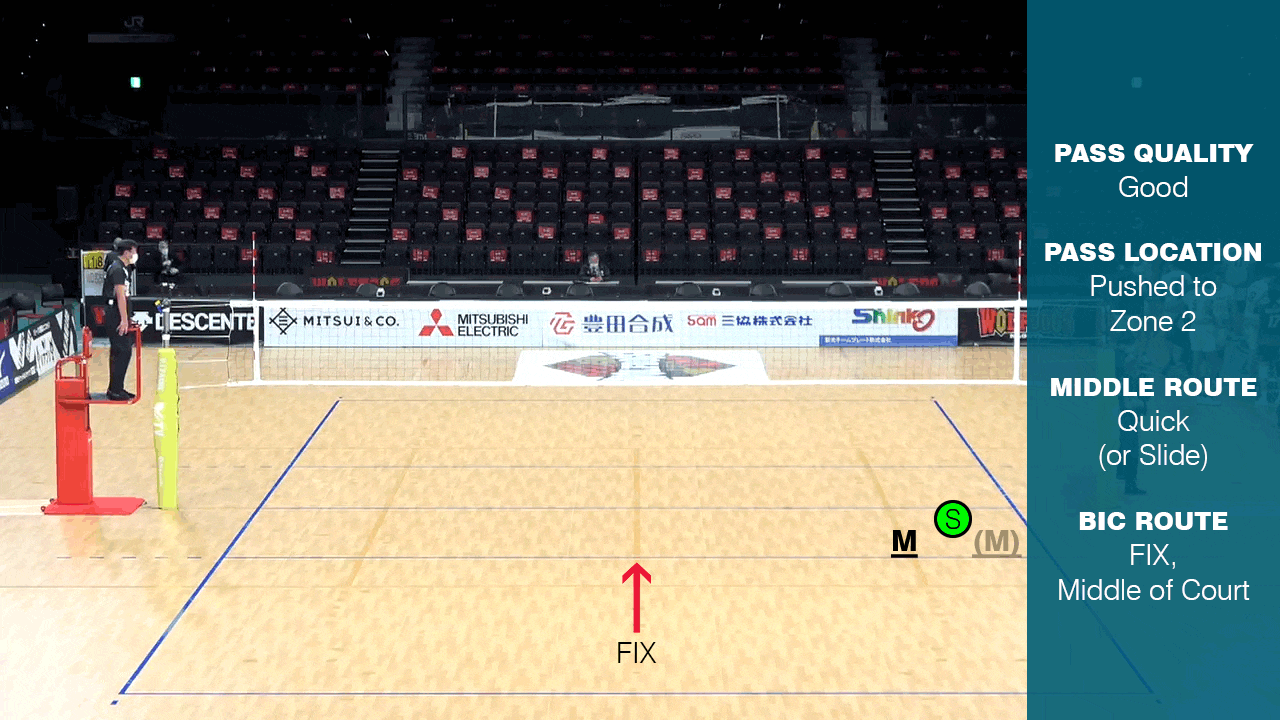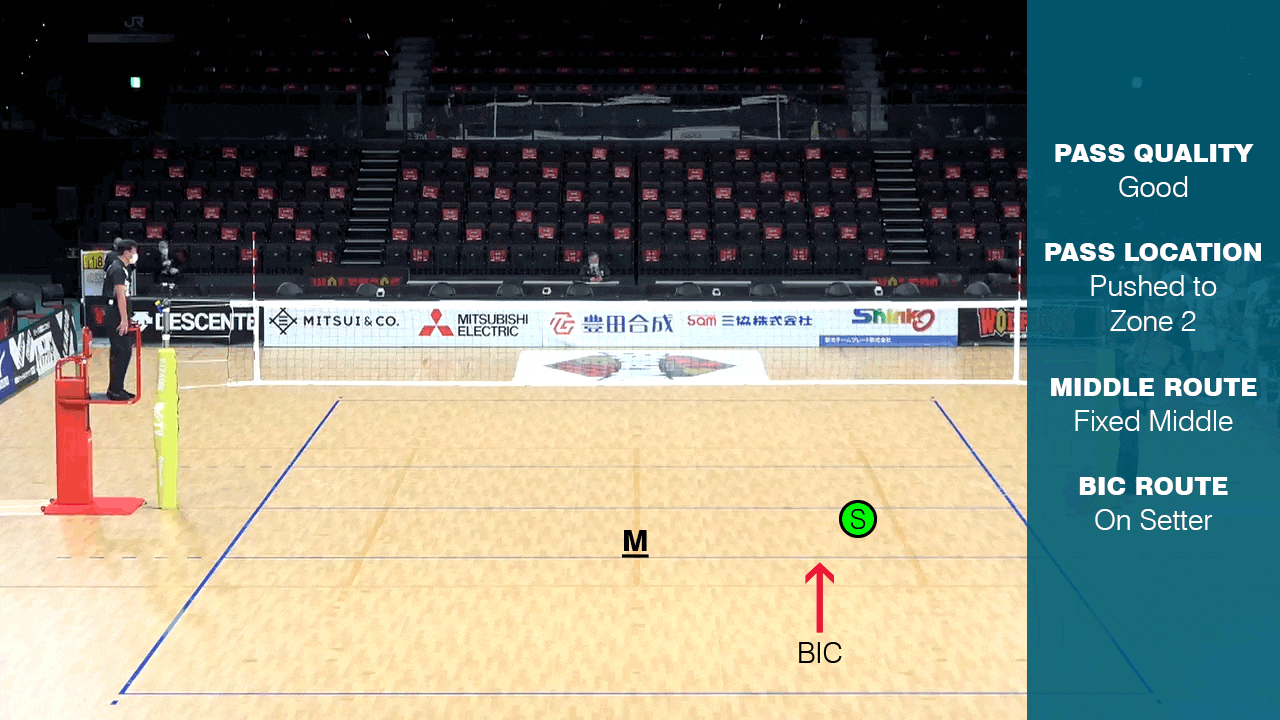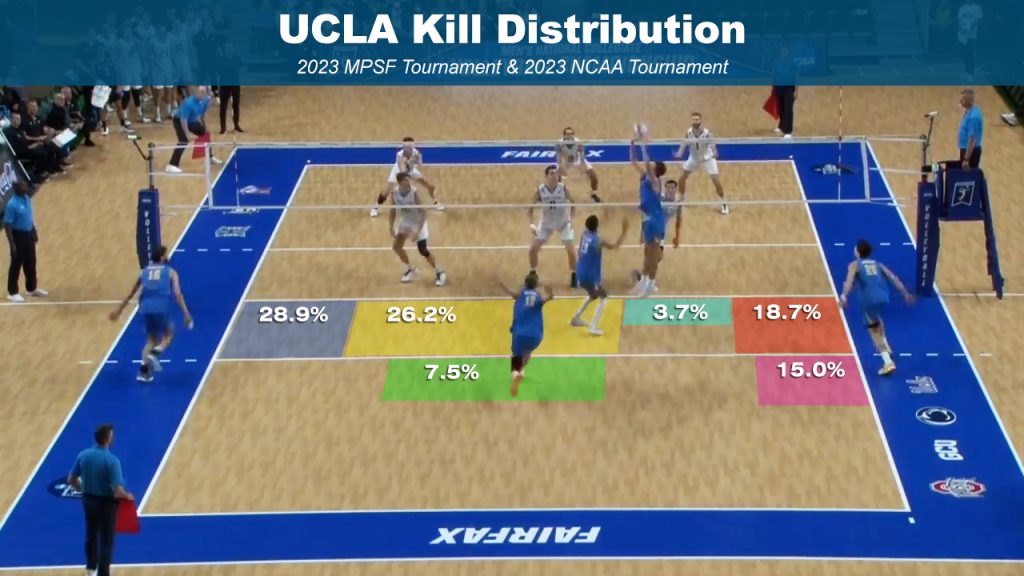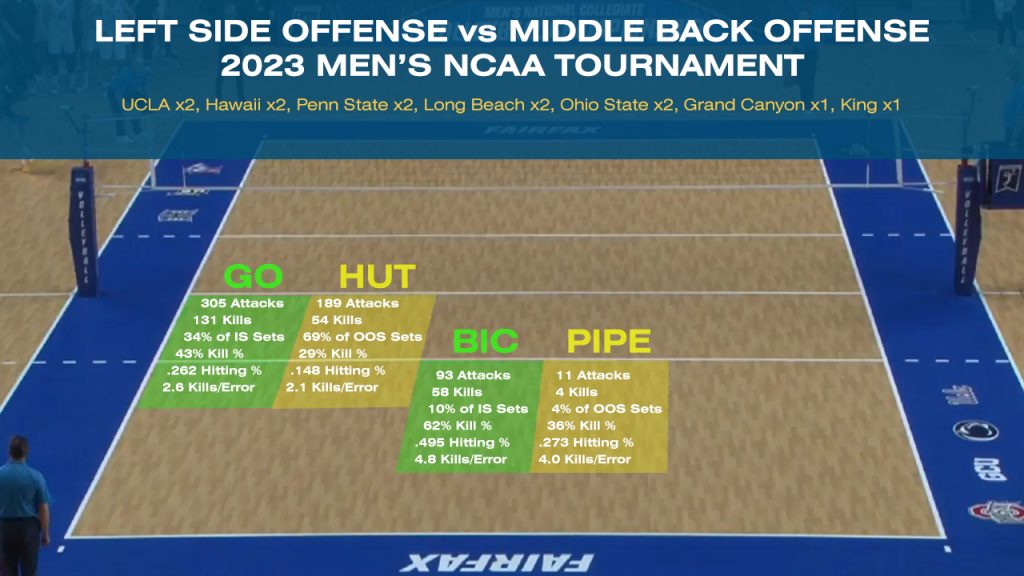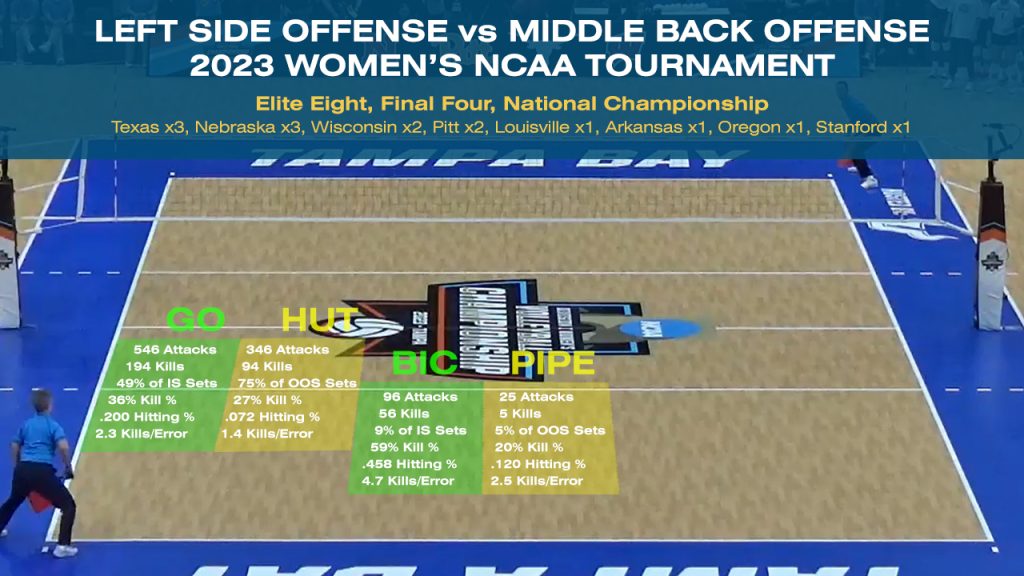Written by Chris McGown.
The bic volleyball attack became popular in the late 1990s and early 2000s when the Brazilian men really perfected what was at that time, the next big thing in volleyball, a backrow attack from the center of the court at speed. At our current point in the evolution of the sport, the BIC play is ubiquitous in the men’s game, and is becoming increasingly relevant in women’s volleyball as the athletes get taller, more dynamic, and the front-row-setter offense becomes less slide-centric, and more “middle in front, opposite on the right out of the back row” oriented. That is to say, everyone knows what a BIC looks like, but the hard part is getting it right consistently, and putting in the training time to reach the point where it becomes an integral, highly productive part of the offense.
BIC Volleyball TEMPO
Like any other set, you can run the BIC at whatever tempo aligns with the technical capabilities of your team, but bear in mind, this play was designed to be run at speed. A slow BIC becomes a PIPE, and that’s a different play that doesn’t nearly stress the defense in the same way. The real intent is to occupy the middle of the court with two attackers coming at speed (and the pins with fast attackers), thus creating a conundrum for the defense – “how do I block four fast attackers with only three blockers?” If the wing blockers leave for the pins, the middles are 1-on-2. If the wings stay and help, now we’ve opened up the outside edges.
If you are going to run this play, the slowest you should probably be is full-second-step. At BYU with our collegiate men’s team, we tried to be “heel-down” on our third step, meaning the BIC hitter’s right heel (third step) was landing on the floor as the setter contacted the ball. Naturally, some levels of volleyball will have slower tempo sets to the BIC hitter, while some might be even on a full third step.
It is also very important to understand that the faster you go, the more precise your routes need to be, the more accurate your setter needs to be, and the more your attackers need to be able to hit balls with power across the range of their armswing. In other words, if the set isn’t perfect, can you still get on it and hit it hard?
BIC volleyball spacing
Spacing on the BIC is the other difficulty you’ll encounter, as we need clarity between middle, BIC attacker, and setter. We’ve got people jumping all over the place, and we want our BIC attackers to commit to a route and go hard, without worrying about landing on a teammate. I’m a strong believer in the power of simplicity done well, and we had wonderful success with our team in Japan (Nagoya Wolfdogs) running what I considered a very basic, but fast-pace BIC system.
The first order of business was creating some very simple, clear rules for our middle blockers when the play-call was next to the setter. We only had two routes for our middles – either next to the setter, or in the gap. No floating, no drifting, no fancy stuff. You were either next to the setter, or if the pass came further off the net than about 4 feet, you audibled to the gap. This allowed our BIC hitters to know with certainty where the middle would be, and would allow them to commit completely (big jump!) to their route.
Middle Attack ROUTES: Quick in Front
Middle Attack ROUTES: GAP
If the play-call was in the gap to start, then it was easy to simply stay in the gap. The one exception we had was that if the setter got pushed to the far right, the middle moved into the middle of the court, rather than stay all the way over in the gap. It was just too far of a set to be effective when the setter had to try and thread the needle all the way across the court.
With those guidelines for middles in place, now we simply had to adjust where the BIC hitter would be in relation to the middle.
BIC HITTER ROUTES: ON TOP OF SETTER
The general idea was that any time you had a middle tight to the setter (very good pass), you wanted your BIC hitter to run just off the left shoulder of the middle. If the setter was alone (middle in the gap, or in WVB, middle on a slide) then we wanted our BIC hitter to run just slightly in front of the setter (almost a straight up set).
BIC HITTER ROUTES: FIXED (Center of courT)
The above scenarios assumed a pass or dig in the center of the court. Once the setter started getting pushed side-to-side, we changed patterns to what we called a “FIX” or a BIC play in the dead center of the court. Again, we were trying to occupy the middle of the court with this play and put pressure on the block to deal with things inside.
This last scenario, with the middle in the center of the court, and the setter pushed to the far right was one where we told the setter to simply set the right-side attacker, the middle, or the left-side attacker and rarely set the BIC. If you can run the BIC attacker really, really fast, it becomes a viable play, otherwise it’s too easy for the right-side attacker to get confused and think it’s his/her ball. Sometimes, it’s just better not to force a bad hand.
BIC ATTACK FREQUENCY
The question now becomes one of implementing the BIC attack into our offense. Each team’s offensive philosophy will be slightly different based on personnel and the strengths/weaknesses of individual players, but we know that the best international teams in the world run about one-third of their offensive attacks through the middle of the court.
The reality is that we can’t set our middle-front attackers this often, which means we need to make up the difference with middle-back attackers.
The UCLA men’s volleyball team won the 2023 NCAA national championship with one of its best seasons in program history. When looking at UCLA’s distribution throughout the conference and national postseason tournaments, we see that 23.0% of all attacks were from middle-front attackers, 7.0% from middle-back attacks, and 2.8% from a front-row setter dump. When added up, the total amount of offense through the middle of the court is 32.8%.
The kill distribution shows even more emphasis of this idea, with 37.4% of the team’s kills coming from middle-front attacks, middle-back attacks, and setter dumps.
Whenever the topic of back-row attacking comes up, we are commonly asked about its effectiveness in women’s volleyball. The BIC attack and other back-row attack options are becoming much more common in women’s volleyball. The following graphics illustrate how often the seven teams in the 2023 NCAA men’s tournament and the top eight teams in the 2023 NCAA women’s tournament set middle-back attackers in comparison to left-front attacks in both in-system and out-of-system situations.
Keep in mind that these are the best teams with the best athletes in the country, which of course not every team has access to. But these graphics do show us that the BIC attack is an extremely efficient offensive option for teams that have good middle-back attackers.
TRAINING THE BIC
We trained some version of this offensive system every day for at least 30 minutes, with a combination of position-only and full-team drills, focusing on tempo, spacing, and communication. We’d create all of the various scenarios (our liberos would pass all over the place) through a series of serve receptions, tosses, and game play, and then make sure everyone was where they should be, when they should be there. Lots of reps, lots of feedback, and lots of time watching practice video after the fact.
HOW TO KNOW IF YOU SHOULD RUN BIC
This is one of the “rocket science” types of questions that we have to address as coaches. Is it worth the time to invest in the BIC attack, or should we spend that time working on other, potentially more important, elements of our offense (or another skill altogether)?
The following eye test might help you in your effort to answer the previous questions. Play three-vs-three volleyball with back-row attackers and no blockers. Any of your back-row attackers that can get a kill 50% of the time or more in this type of drill could and probably should become a good option as a BIC attacker in your offense.
The BIC can be a spectacular play, and one that can be incredibly efficient for your team. In my experience, you need very capable personnel coupled with A LOT of training time to become adept, but it’s certainly worth the investment if you are a high-level team looking to win championships.

